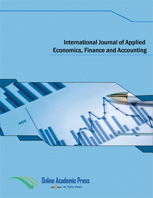Boosting Cooperation Between Agents in Diverse Groups: A Dynamical Model of Prosocial Behavior, Free-Riding and Coercive Solutions
DOI:
https://doi.org/10.33094/8.2017.2018.32.48.55Keywords:
Cooperation, Dynamical analysis, Groups, Identity.Abstract
Cooperation is usually stronger towards in-group members, because giving an up-right signal about themselves implies higher possibilities of reciprocity among members with the same social identity. We examine the case where collaboration between two groups is a mandatory condition to achieve success in a particular project, but in the first one, the social identity is quite strong. We show that the existence of a small share of prosocial players in the first group can create a sort of "imitation effect" so that each new member puts more effort in cooperating with the outsiders. On the other side, to avoid free-riding effort should be conditional to the other's commitment. This way to boost cooperation is usually more efficient than a coercive strategy in the presence of significant sized majorities or feelings of resentments. Our analysis suggests that it is appropriate, under some circumstances, to stimulate a multicultural paradigm devoted to value and manage diversity through an acculturation process emphasizing adaptation, interdependence, and mutual appreciation of different cultures.




